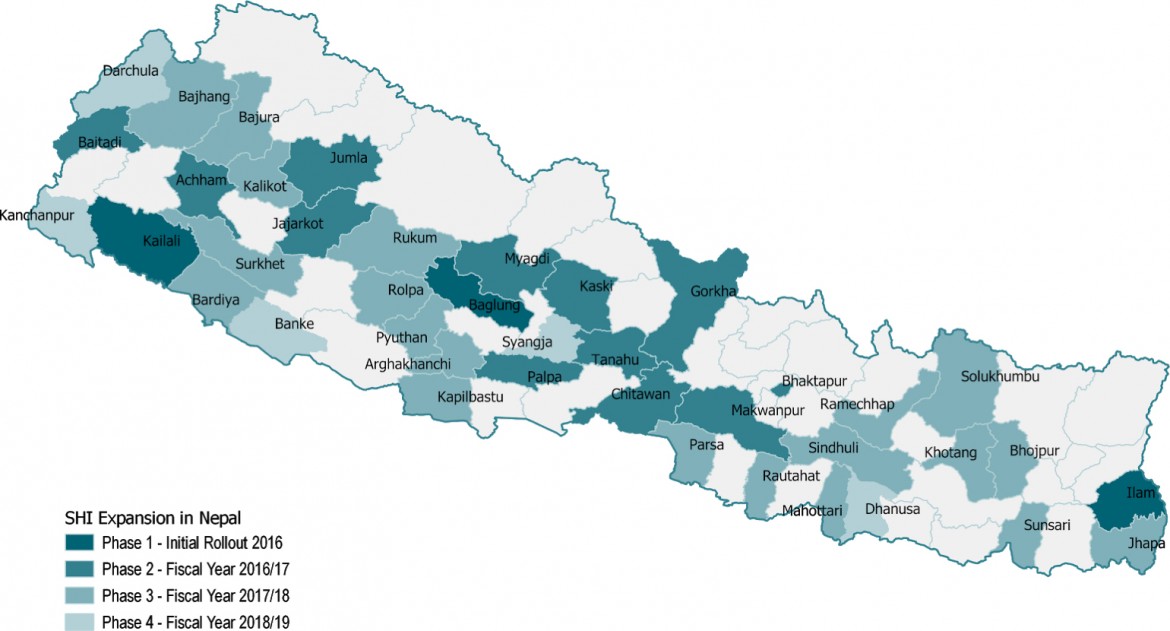Nepal
Overview on the ground
Social Health Insurance was introduced by the Government of Nepal in April 2016, with an initial roll-out to 3 of the country’s 77 districts, focused primarily on the informal sector. The scheme is family based, with a family of up to 5 members contributing Rs. 3500 (EUR 30) for a benefit package worth Rs. 100,000 (EUR 800) per family, per year.
IMIS, adapted from the Tanzania and Cameroon implementations, was used from the very beginning to manage all core business processes of the insurance scheme - from beneficiary management to claims adjudication.
Since 2016, the scheme has been gradually expanding to other districts. In 2017, the Health Insurance Board (HIB) of Nepal was formed following the enactment of the Nepal Health Insurance Act, which mandates that every Nepali citizen be covered by a social health insurance scheme.
Currently, the scheme is available in 65% of the country (41 out of 77 districts), with an aim to cover 100% by 2020.
Once the master version was available, the HIB transitioned to openIMIS. The tool has been instrumental in helping Nepal implement insurance as complicated processes, particularly around enrollment and claims processing, have been made easier. The availability of Android-based apps for enrollment has meant that enrollment assistants can go door to door to bring households into the scheme. A web-based claims entry and adjudication module significantly diminishes paper-based transactions and reduces paperwork for health facilities. This has enabled the Health Insurance Board to achieve the current rapid rate of expansion.
Additionally, the IT team of the HIB is constantly engaging with the implementers and developers committees of the openIMIS community to introduce new features and develop the software further. These new features will not only help Nepal achieve interoperability, but will also provide valuable products for the global community of openIMIS users.
Learn more about the scheme and openIMIS use from HIB Nepal’s website.
National roll-out state

Full Project scope
| Health centers | 268 health facilities (primary healthcare centers, hospitals). Includes both private and public facilities. |
|---|---|
| Configuration | Social Health Insurance Scheme Configuration:
System Setup:
|
Integration and interoperability
The primary focus of interoperability with openIMIS in Nepal has been around the electronic submission of claims via Electronic Medical Record Systems. There are a few service providers that use EMRs in their hospitals and work is currently underway to design standard approaches to allow them to submit claims electronically. An integration of openIMIS and Bahmni (used in 4 health facilities in Nepal) has been implemented, and is used by Bayalpata Hospital to submit their claims automatically to openIMIS.
The openIMIS deployment in Nepal also uses resources from the interoperability framework of the Ministry of Health and Population - namely the health facility registry.
Facts and figures
| Total enrolled | 1,599,933 |
|---|---|
| Active members | 1,338,331 |
| Health service providers | 268 |
| Total users (enrolment assistants, enrolment officers, claims entry staff, claims review staff) | 4256 |